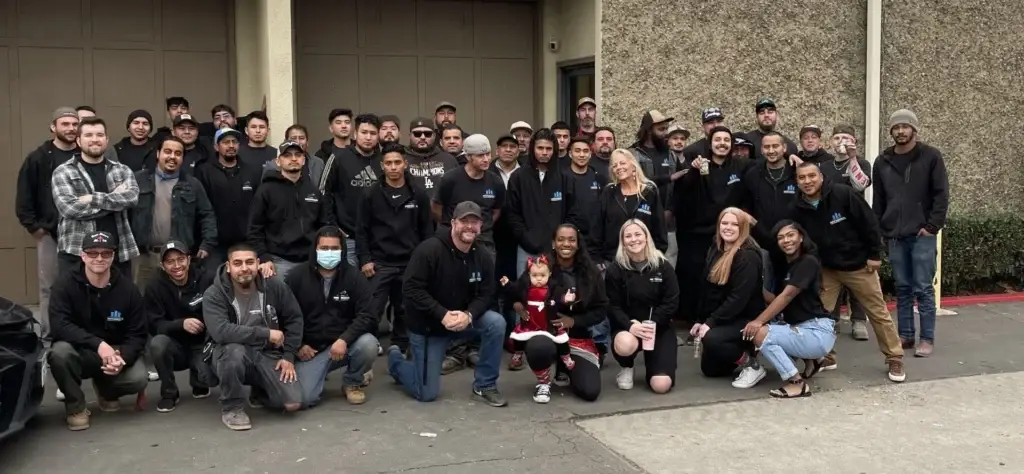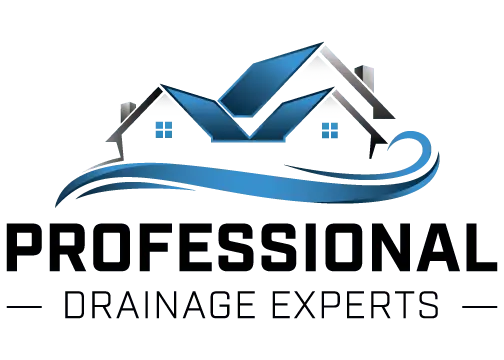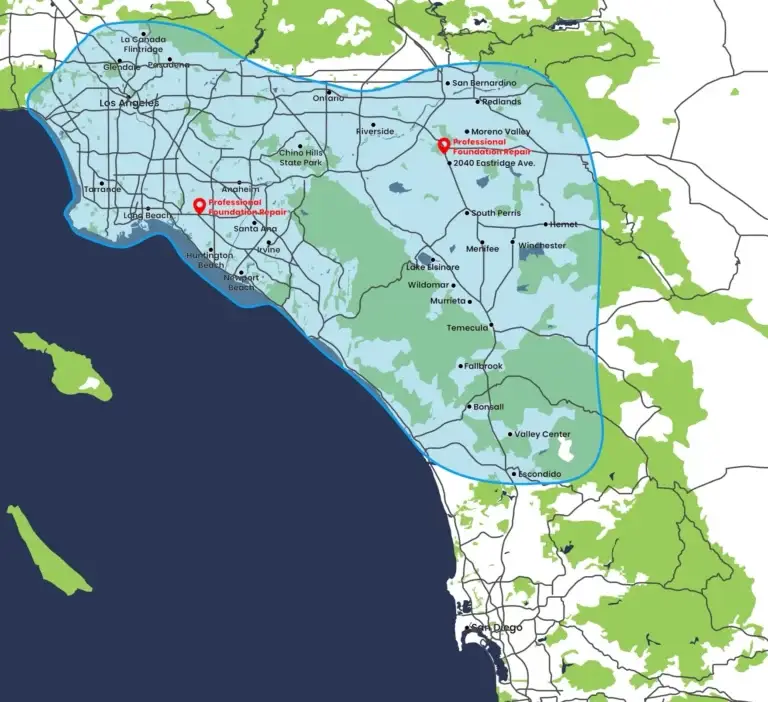Rainwater Harvesting Solutions for Southern California Structures
Rainwater harvesting is an essential practice for sustainable water management in dry regions like Southern California. By collecting and storing rainwater, structures can reduce their reliance on traditional water sources and contribute to water conservation efforts. Additionally, rainwater harvesting can help mitigate issues related to water runoff and erosion, making it an ideal solution for properties with landscape irrigation needs.
Professional Drainage Experts are the contractors of choice for rainwater harvesting solutions in Southern California. Our expert technicians will assess your property, understand your goals, and design the right system for your situation.
- Reduces reliance on traditional water sources.
- Mitigates water runoff and erosion.
- Supports landscape irrigation needs.
- Conserves water resources effectively.
- Enhances property resilience and sustainability.
Table of Contents
What are the Benefits and Advantages of Rainwater Harvesting?
Rainwater harvesting offers numerous benefits, such as reducing water bills, providing a sustainable water source for irrigation, and helping to prevent erosion by managing runoff effectively. By collecting rainwater, property owners can also decrease their reliance on potable water sources, contributing to water conservation efforts and reducing strain on local water supplies.
Rainwater harvesting solutions come in various forms to suit different property types and needs. Some common options include berms, swales, roof washers, roof-water filters, roof catchments, rainwater cisterns, rain barrels, bioswales, rain gardens, and catch basin solutions.
Berms
Berms are raised mounds of soil that help to divert rainwater and prevent erosion. They can be strategically placed to manage runoff and facilitate infiltration into the soil, reducing the risk of waterlogging and sediment buildup.
Berms can also create microclimates for vegetation and support landscape irrigation by directing water where it’s needed most. Properly designed berms can effectively capture and store rainwater, making them a valuable tool for sustainable water management.
Swales
Swales are shallow channels or ditches designed to slow, capture, and redirect runoff water. By allowing water to infiltrate the soil, swales help recharge groundwater and reduce surface water runoff, preventing erosion and flooding.
Swales can also be integrated with vegetation to enhance filtration and pollutant removal from rainwater, making them a versatile solution for managing stormwater on properties.
Rainwater Cisterns
Rainwater cisterns are storage tanks designed to hold collected rainwater for later use. Cisterns come in different materials, sizes, and configurations to suit various water storage needs and space constraints.
By storing rainwater in cisterns, property owners can ensure a reliable supply of water for landscape irrigation, gardening, and other non-potable uses. Proper maintenance and monitoring of rainwater cisterns are essential to prevent contamination and ensure the quality of stored water.
Rain Barrels
Rain barrels are smaller-scale rainwater storage containers typically connected to downspouts to capture runoff from roofs. While rain barrels have limited storage capacity compared to cisterns, they are a cost-effective and space-efficient solution for collecting rainwater on residential properties.
Rain barrels can be used to water gardens, lawns, and landscaping, reducing the need for potable water for outdoor irrigation. By diverting runoff into rain barrels, property owners can conserve water and reduce their environmental impact.
Rain Gardens
Rain gardens are landscaped areas designed to capture and absorb rainwater runoff from roofs, driveways, and other hard surfaces. By using a combination of deep-rooted plants and porous substrates, rain gardens can help reduce flooding, improve water quality, and support biodiversity in urban environments.
Rain gardens are a visually appealing and environmentally friendly way to manage stormwater on residential and commercial properties. Proper design and maintenance of rain gardens are essential to ensure optimal performance and longevity of these sustainable landscape features.
Catch Basin Solution
Catch basins are drainage structures designed to capture and redirect surface water runoff to prevent flooding and erosion. By strategically placing catch basins in critical areas, property owners can effectively manage stormwater and reduce the risk of water-related damage to structures and landscapes.
Catch basin solutions can be customized to suit specific property needs, including slope, soil composition, and water flow patterns. Regular inspection and maintenance of catch basins are essential to ensure proper functioning and optimize stormwater management.
Rainwater Harvesting Treatments
Various treatments can be used to ensure the harvested rainwater is safe and suitable for consumption or other uses. These treatments can help remove impurities and contaminants from the rainwater, making it a valuable and sustainable resource for communities and individuals. Here are some of the common rainwater harvesting treatments available and their benefits.
- Filtration: Rainwater should be filtered to remove debris, dirt, and other impurities before storage or use. This can be done using a variety of filters ranging from simple mesh screens to more advanced systems like sand or charcoal filters.
- Disinfection: Rainwater can be treated to remove bacteria, viruses, and other harmful pathogens through disinfection. Common disinfection methods include chlorination, UV sterilization, and zonation.
- Storage: Proper rainwater storage is essential to prevent contamination and ensure water quality. Rainwater should be stored in clean, sealed containers of materials that do not leach harmful chemicals into the water.
- Sedimentation: Settling tanks or sedimentation chambers can allow heavy particles to settle at the bottom before the water is further treated or stored.
- pH adjustment: Rainwater is naturally slightly acidic, and adjusting the pH level can help improve water quality and prevent corrosion of storage tanks and plumbing systems.
- Roof and gutter maintenance: Regular maintenance of roofs and gutters is essential to prevent contaminants like leaves, bird droppings, and debris from entering the rainwater collection system.
- Overflow and diversion systems: Proper overflow and diversion systems should be in place to prevent flooding and ensure that excess water is directed away from the collection system.
- Regular testing: Regular quality testing is important to ensure that it meets safety standards for various uses such as irrigation, flushing toilets, or even for drinking.
By implementing these rainwater harvesting treatments, you can ensure that your collected rainwater is safe, clean, and suitable for its intended use.
Roof Washers
Roof washers help divert the initial runoff from roofs, which may contain debris and pollutants, away from the rainwater harvesting system. By separating the initial flow of water, roof washers help improve the quality of collected rainwater and prevent clogs in downstream components.
Roof washers typically use sedimentation or filtration mechanisms to separate clean water for storage and distribution, ensuring that the harvested rainwater is free from contaminants and suitable for various uses.
Roof-Water Filters
Roof-water filters are essential in rainwater harvesting systems that help remove debris, sediment, and pollutants from the collected rainwater. By filtering the water before storage, roof-water filters improve water quality and prevent clogs in the system, ensuring efficient water capture and distribution.
Roof-water filters can range from simple mesh screens to advanced filtration systems, depending on the level of filtration required and the volume of water to be treated. Regular maintenance of roof-water filters is crucial to ensure optimal system performance and water quality.
Roof Catchments
Roof catchments are where rainwater is collected before being directed into the storage system. Proper design and maintenance of roof catchments are essential to maximize water capture and minimize contamination of the harvested rainwater.
Roof catchments can be made of various materials, such as metal, asphalt, or concrete, each with advantages and considerations for rainwater harvesting. Optimizing the design and layout of roof catchments can significantly impact the efficiency and effectiveness of a rainwater harvesting system.
The Environmental Benefits of Rainwater Harvesting
Rainwater harvesting offers significant environmental benefits by reducing reliance on traditional water sources, preventing erosion and flooding, and supporting sustainable landscape practices. By capturing and storing rainwater, structures can help replenish groundwater, conserve water resources, and minimize the impact of urban development on natural water systems.
Additionally, rainwater harvesting can improve water quality by reducing the amount of polluted runoff entering water bodies and aquifers. By diverting rainwater into storage systems or infiltration areas, property owners can contribute to a healthier watershed and ecosystem in their region.
Pros and Cons of Rainwater Harvesting Solutions
While rainwater harvesting solutions offer numerous advantages, such as water conservation, reduced water bills, and sustainable water management, they also come with some challenges. Maintenance requirements, initial installation costs, and potential for system malfunctions are factors to consider when implementing rainwater harvesting solutions.
However, the long-term benefits of rainwater harvesting, including water savings, environmental protection, and increased property value, often outweigh the drawbacks. By working with a qualified contractor like Professional Drainage Expert to carefully design and maintain rainwater harvesting systems, property owners can enjoy the advantages of sustainable water management while minimizing potential issues.
Construction & Features
The construction of rainwater harvesting systems typically involves components such as cisterns, catchment areas, filtration systems, and distribution networks. Proper sizing and placement of these elements are crucial to ensure efficient water capture, storage, and distribution for various uses.
Features like overflow mechanisms, sediment traps, and water treatment devices are essential to prevent clogs, maintain water quality, and optimize system performance. By incorporating smart design and durable materials, rainwater harvesting systems can provide reliable water supply while minimizing maintenance needs.
Rainwater Harvesting Solutions by Professional Drainage Experts
Professional Drainage Experts offers a range of rainwater harvesting solutions tailored to the specific needs of Southern California structures. With expertise in sustainable water management and landscape design, our team provides comprehensive services for designing, installing, and maintaining efficient rainwater harvesting systems.
Whether to conserve water, reduce runoff, or enhance your property’s landscape irrigation, Professional Drainage Experts can deliver solutions that meet your goals and exceed your expectations.
Contact us today to learn more about our rainwater harvesting services and see how we can help you create a more sustainable water management system.
Why Choose Professional Drainage Experts

At Professional Drainage Experts, we specialize in providing comprehensive inspections and services for commercial properties throughout the region. With our team of experienced professionals and dedication to quality workmanship, you can trust us to identify any issues with your foundation and drainage system and recommend the most effective solutions. Here are just some of the reasons to go with us:
- Experience: Professional Drainage Experts has years of experience in conducting foundation and drainage system inspections for commercial properties in Southern California. Our team of experts has the knowledge and expertise to identify any issues and recommend effective solutions.
- Proven Track Record: Our company has a proven track record of successfully conducting inspections and resolving foundation and drainage system issues for commercial properties in the region. We have helped numerous businesses maintain their property’s structural integrity and prevent costly damages.
- Customized Solutions: We understand that every commercial property is unique, which is why we provide customized solutions tailored to the needs of each client. Our team will assess your property thoroughly to identify any potential issues and recommend the most effective solutions to address them.
- Timely Service: We understand the importance of addressing foundation and drainage system issues promptly to prevent further damage to your property. Our team is committed to providing fast and efficient service, so you can rest assured that your property is in good hands.
- Licensed and Insured: Professional Drainage Experts is a licensed and insured company, ensuring that all work is conducted properly and according to industry standards. You can trust that our team has the necessary credentials and qualifications to handle your commercial property’s foundation and drainage system inspection needs.
- Competitive Rates: We offer competitive rates for our foundation and drainage system inspection services, providing you with high-quality work at a fair price. We strive to deliver exceptional value to our clients, so you can trust that you are getting the best service for your investment.
- Customer Satisfaction: At Professional Drainage Experts, customer satisfaction is our top priority. We take pride in delivering exceptional service and building long-lasting relationships with our clients. You can trust that we will go above and beyond to ensure that your commercial property’s foundation and drainage system are in top condition
- Comprehensive Inspections: We offer comprehensive inspections that cover all aspects of your property’s foundation and drainage system. This includes evaluating the structural integrity of the foundation, checking for signs of water damage, and assessing the effectiveness of the drainage system.
- Professionalism: Our team is dedicated to providing you with high-quality service and accurate assessments. We will work diligently to identify any issues with your property’s foundation and drainage system and provide you with recommendations for repair or maintenance.
- Cost-Effective Solutions: At Professional Drainage Experts, we understand the importance of cost-effective solutions for commercial property owners. We will work with you to develop a plan that fits your budget while ensuring the long-term stability and functionality of your foundation and drainage system.
Choose Professional Drainage Experts for your commercial property foundation and drainage system inspection in Southern California, and experience the difference that our expertise and professionalism can make.
Frequently Asked Questions
Q: What is rainwater harvesting, and how can it benefit Southern California structures?
A: Rainwater harvesting involves collecting and storing rainwater from rooftops, gutters and downspouts for later use. This provides an additional source of water that can help meet your household water needs, reduce the need for imported water, and support sustainable water management practices in Southern California’s arid environment.
Q: How can rainwater harvesting systems aid in irrigation for my garden?
A: Rainwater harvesting systems can provide water for irrigation, supporting the vegetation in your garden. By storing rainfall, you align your water use more sustainably with local water availability, ensuring your garden thrives even during dry periods without the need for municipal water.
Q: Can rainwater harvesting help with reducing household daily water usage?
A: Yes, using harvested rainwater for purposes such as toilet flushing, laundry, and irrigation can significantly reduce your household’s daily water needs. This not only lowers water bills but also conserves precious potable water supplies for more critical uses.
Q: What are some common methods for designing and installing rainwater harvesting systems?
A: Common methods include installing a rain barrel to collect water from downspouts, creating dry wells for larger storage, and using green infrastructure like permeable pavements and bioswales to direct water into the soil. Professional services can ensure systems are efficiently designed to divert the water where it’s needed most.
Q: How can rainwater harvesting systems help with water treatment and storage?
A: Advanced rainwater harvesting systems can include filtration and storage solutions that provide water suitable for potable uses. Proper rainwater management prevents contamination and ensures the collected water is safe for various household applications.
Q: What role does rainwater harvesting play in rainwater management for structures?
A: Rainwater harvesting plays a crucial role in rainwater management by capturing, diverting, and storing water away from foundations, thus preventing erosion and structural damage. It also reduces stormwater runoff, minimizing flooding and decreasing the load on municipal stormwater systems.
Q: How can rainwater harvesting systems contribute to fire protection in Southern California?
A: In fire-prone areas of Southern California, rainwater harvesting systems can provide an essential water supply for emergency fire protection. Stored rainwater can be used to wet down vegetation and structures, helping to create defensible space around properties.
Q: Is rainwater harvesting a viable solution during periods of low rainfall in Southern California?
A: Yes, even during periods of low rainfall, rainwater harvesting captures available rainfall to supplement water needs. While it may not entirely replace other water sources, it significantly reduces the dependency on external water supplies and supports conservation efforts.


